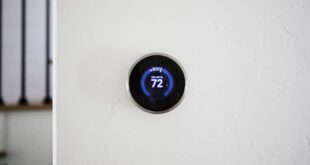 Sometimes we’re spot-on when we predict the future. Other times we blow it horribly.
Sometimes we’re spot-on when we predict the future. Other times we blow it horribly.
Larry Zarker, BPI CEO “I don’t know a solar panel in America that checks the weather.”
Fast forward to recent years and the emerging smart grid. Are we again creating overly ambitious expectations? It appears so, given some of the examples Zarker presented of published statements about smart grid, among them:
- Your electric car knows when there is extra solar or wind power, and that’s when it recharges itself.
- You can use your smart phone to reprogram your water heater from your office
- Your solar panels have checked the weather… They’ve told the dishwasher that the sun is shining so it can kick on. When a cloud passes, the panels tell it to pause.
“We have to be careful about how we present this,” he said. “I don’t know a solar panel in America that checks the weather. It’s smart house all over again.” Today’s builders are wary of smart grid because they remember smart home, he said. “One of them said to me, ‘We are still taking Advil from our experience with smart house back in the 80s.’” 10,000 year plan On top of that, the US faces a massive numbers’ problem just taking the first step in making homes energy efficient. The US has 130 million homes and a third are over 45 years old, so many predate modern energy codes. They need efficiency improvements that would reduce their electric load to make them “smart grid ready,” he said. How do we make the US housing stock smart grid ready in a decade? We would need to improve and update 13 million houses a year. Unfortunately, our pace has been far slower, at about 13,000 homes per year. 
Presentation, “Does Smart Grid Make Sense for Dumb Houses?”
Larry Zarker, CEO Building Performance Institute, National Summit on Integrating Energy Efficiency & Smart Grid 2013
“We’re conveniently on the 10,000 year plan to get ready for smart grid. And that’s a problem. We need to figure out how to bring this mainstream, how to bring this to the remodeling industry, to the HVAC industry, to the [building] envelope industry, all the people who have something to do with house – to help them get smart grid ready.” What to do? Well, for one, we need to offer practical services in smart-grid ready homes that people want, such as security systems, home entertainment, health care and education services all integrated from a central remote, he said. And what we don’t want to do is make technology promises that again let consumers down. “Let’s create real solutions that benefit customers,” he said. If not, well, anyone interested in a rerun of the disappointments of the 1980s?
Do you think we’re over-hyping smart grid? What’s the best way to avoid the “10,000-year plan?” Join Energy Efficiency Markets LinkedIn group and let us know your thoughts.
About Elisa Wood Elisa Wood is an editor at EnergyEfficiencyMarkets.com. She has been writing about energy for more than two decades for top industry publications. Her work has been picked up by CNN, the New York Times, Reuters, the Wall Street Journal Online and the Washington Post.
 Alternative Energy HQ solar power for homes, wind energy, and bio fuel issues
Alternative Energy HQ solar power for homes, wind energy, and bio fuel issues











